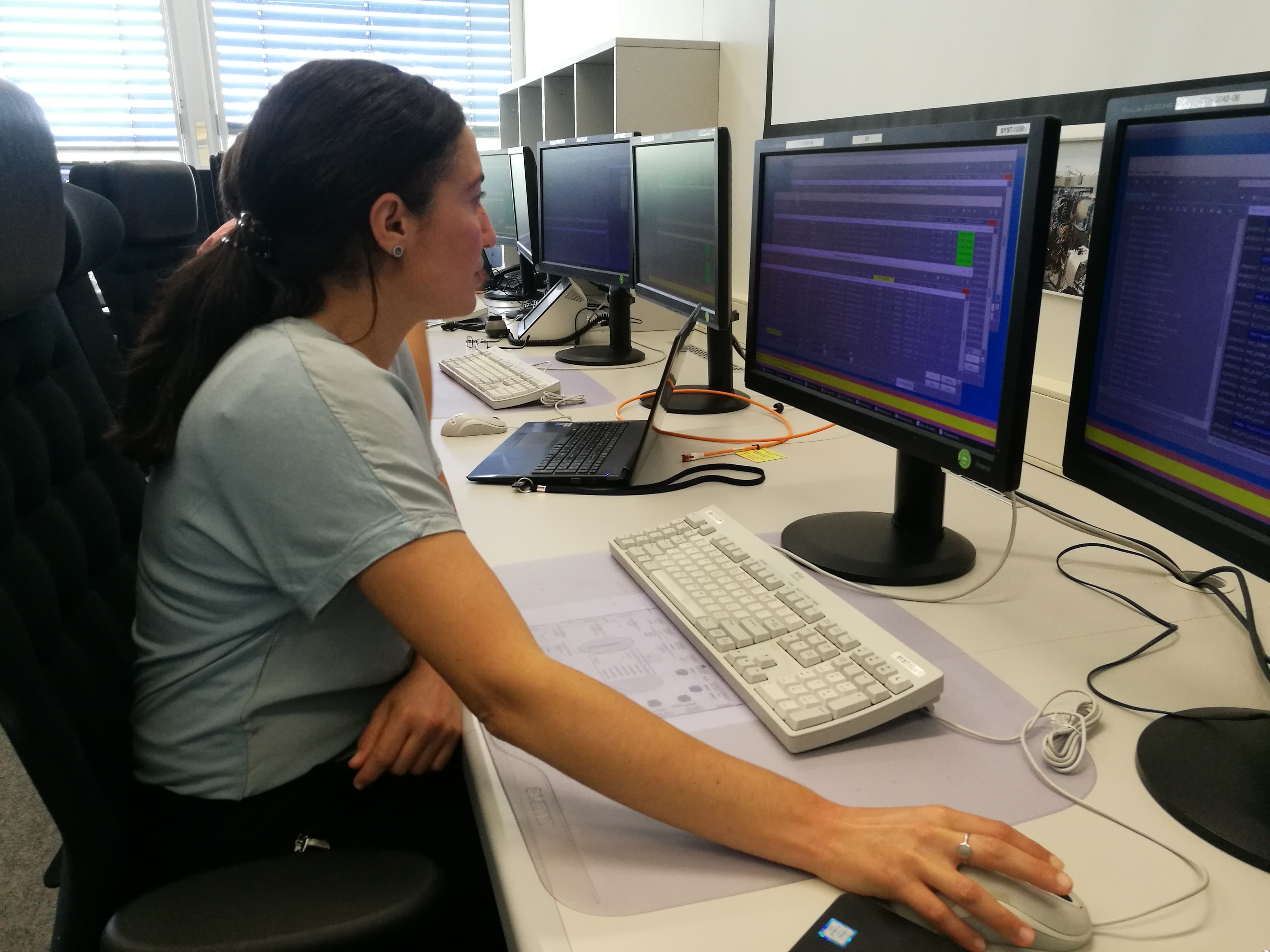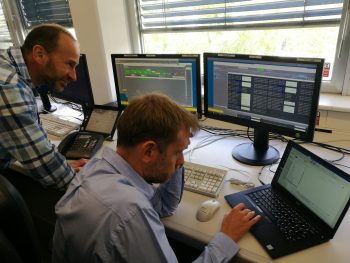
Salma Fahmy, team member on the Solar Orbiter Project Office at ESTEC Credit: ESA/D. Lakey
ESA’s Solar Orbiter team have been busy for the last few months preparing for the first ‘Spacecraft Validation Test’ – referred to in engineering-speak as ‘SVT-0’ – which is the first opportunity the mission control team to establish a data link to the actual flight hardware and send commands to the spacecraft.
The mission controllers are working at ESA’s ESOC control centre in Darmstadt this week, joined by representatives from the mission’s two instrument teams, the ESA Project Team based at ESTEC in the Netherlands and the AirbusDS-UK industrial team. The spacecraft itself is located in Stevenage, UK.

Jose-Luis Pellon-Bailon & Matthias Eiblmaier Credit: ESA/D. Lakey
Yesterday and today, the team will validate flight control procedures and the database that describes the commands and telemetry of the spacecraft. It’s a lot of work but at the end of it, a real milestone will have been passed.
Spacecraft Operations Engineer Daniel Lakey explains, “This is the culmination of months of work by us, our colleagues across ESA and, of course, the teams at AirbusDS-UK, who are leading the build of the spacecraft and are supporting these test connections from the cleanroom in Stevenage.”
“We have a list of over 250 procedures that we will methodically go through, to ensure they are ready for flight. This first contact with the real spacecraft is an exciting step after having spent years working on paper!”
More tests are planned over the coming months, and next year.
#Solo
#ESOC
from Rocket Science https://ift.tt/2NrqlVJ
v

Salma Fahmy, team member on the Solar Orbiter Project Office at ESTEC Credit: ESA/D. Lakey
ESA’s Solar Orbiter team have been busy for the last few months preparing for the first ‘Spacecraft Validation Test’ – referred to in engineering-speak as ‘SVT-0’ – which is the first opportunity the mission control team to establish a data link to the actual flight hardware and send commands to the spacecraft.
The mission controllers are working at ESA’s ESOC control centre in Darmstadt this week, joined by representatives from the mission’s two instrument teams, the ESA Project Team based at ESTEC in the Netherlands and the AirbusDS-UK industrial team. The spacecraft itself is located in Stevenage, UK.

Jose-Luis Pellon-Bailon & Matthias Eiblmaier Credit: ESA/D. Lakey
Yesterday and today, the team will validate flight control procedures and the database that describes the commands and telemetry of the spacecraft. It’s a lot of work but at the end of it, a real milestone will have been passed.
Spacecraft Operations Engineer Daniel Lakey explains, “This is the culmination of months of work by us, our colleagues across ESA and, of course, the teams at AirbusDS-UK, who are leading the build of the spacecraft and are supporting these test connections from the cleanroom in Stevenage.”
“We have a list of over 250 procedures that we will methodically go through, to ensure they are ready for flight. This first contact with the real spacecraft is an exciting step after having spent years working on paper!”
More tests are planned over the coming months, and next year.
#Solo
#ESOC
from Rocket Science https://ift.tt/2NrqlVJ
v

Aucun commentaire:
Enregistrer un commentaire